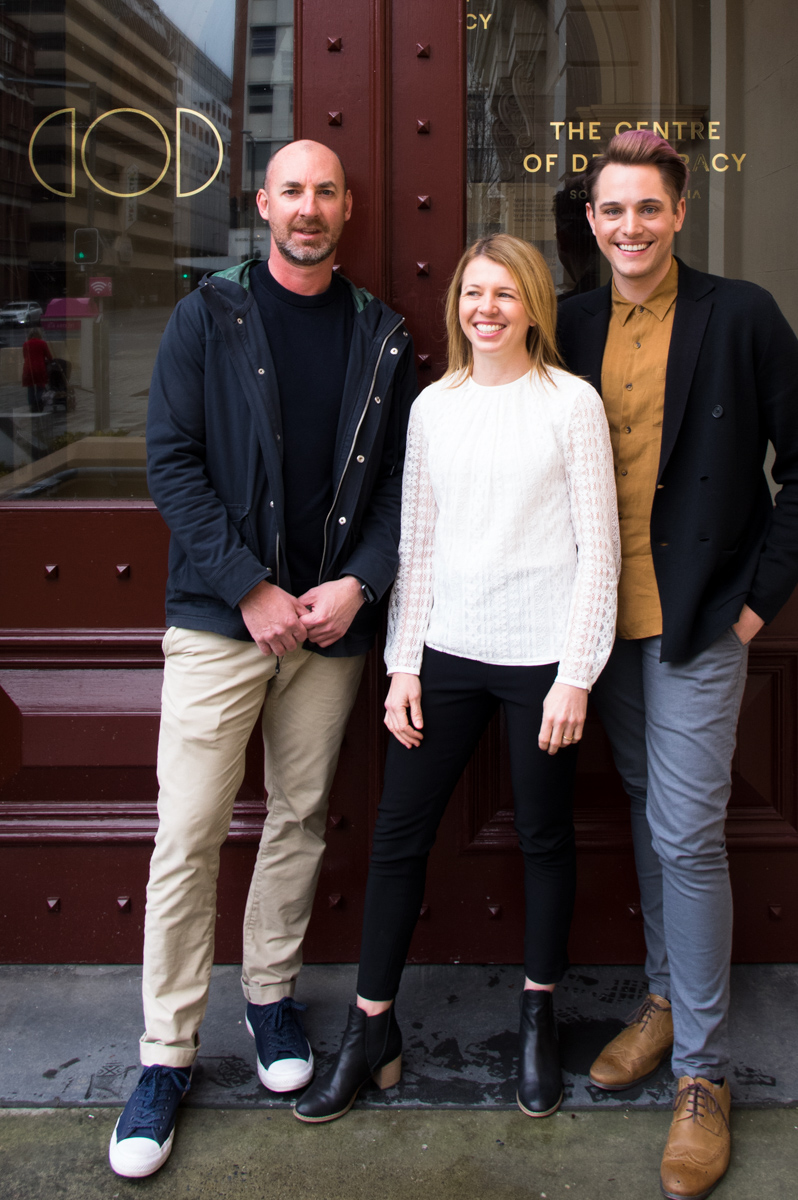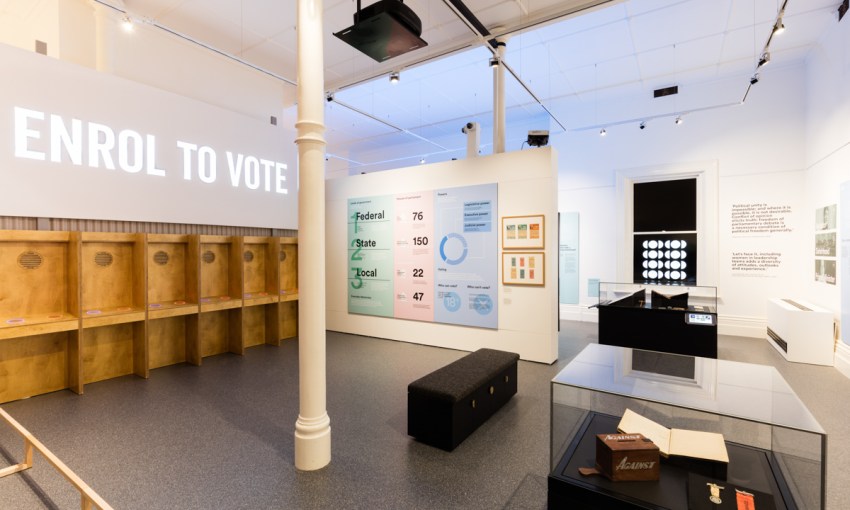The Centre of Democracy might be exploring some age-old ideas in an old building, but it's doing it in some very new ways.
Power to the people
Everything about the Centre of Democracy is ambitious.
It’s the newest face on Adelaide’s most prestigious institutional corridor, North Terrace; it’s attempting to bring life back to a building frozen in form by heritage restrictions; and it’s hoping to engage people with concepts that are, in recent years, seen by many as stale.
The Centre of Democracy is located at the corner of Kintore Avenue and North Terrace, Adelaide and is open to the public 10am-5pm daily, except public holidays.
But the team tasked with bringing the Centre to life in the old Institute Building at the corner of Kintore Avenue are very cheerful; likely because they’ve found a few clever ways to address the central challenges of the Centre’s existence.
The first challenge: re-designing a heritage listed space for a whole new purpose without changing anything about its structure – was tackled by Nicki Duance and Jesse Hanlon of Arketype.
“As a heritage listed building we couldn’t penetrate into the building walls and fabric of the building, or interfere with it in any way,” says Nicki. “There’s even colour restrictions on what paint you can use.”
But, wanting to make the space feel energetic and engaging, rather than old and grand, Jesse and Nicki pushed on to find a two-pronged solution.
The first was in the brand mark for the Centre, which mixes modern elements with traditional flourishes to bring the old space and the new ways of thinking housed within it together.

Jesse Hanlon, Nicki Duance, and Craig Middleton. This photo: Bernadatte Chan.
“We thought: how do we draw someone from strolling along North Terrace into here?,” says Jesse. “So, the brand mark is sort of quite modern and edgy.”

The Centre’s historic entrance beckons
“You can look at it and see COD, or you can look at it and see someone from above, or people embracing – it’s really trying to tell a story in different ways,” adds Nicki.
“But then the font choice and the typographical treatment brings it back a bit,” continues Jesse. “And even the application of things like gold leaf on the windows helps us kind of tie back into that heritage feel.”
Jesse and Nicki’s second solution was to shape the exhibition space using a modular structure, rather than traditional wall-mounted cabinets.
“There was a couple of givens we had to work with because of the small size of the space,” says Jesse. “But this configuration seemed to give you a good sense of entry, a vista that would draw you down, and then an exhibition space beyond that.”
Within the re-enlivened heritage space, Centre of Democracy curator Craig Middleton has turned his mind toward making the subject of democracy – “something that currently a lot of people are disenfranchised with,” he says – relevant once more.
Craig has brought a series of interactive, digital, and artefact based exhibitions into the space, including a giant artwork by Sandpit, called The Democracy Machine, which allows visitors to cast votes on various issues.
While the content is exceptionally varied, it is all presented with a single aim.
“What we wanted to do was to, rather than focus people’s attention all on the history,” says Craig, “we wanted to get them to think about how they participate in democracy, the state of democracy today, and how as citizens we can change democracy.
“What we’ve done is used the historical as case studies, because these are really important moments in our history, but we’ve foregrounded provocations about gendered citizenship, women’s rights, Indigenous rights – what have we won, where are we going, what do we still need to fight for?”
It’s an important cause and one that deserves a dedicated space – and now, it has got one.






